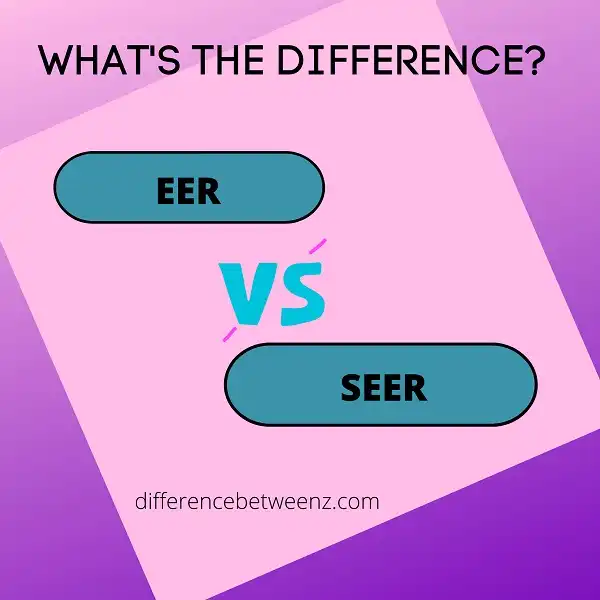When shopping for an air conditioner, it is important to understand the difference between EER and SEER. The EER, or Energy Efficiency Ratio, measures how efficient an air conditioner is in cooling your home. The SEER, or Seasonal Energy Efficiency Ratio, measures how efficient the air conditioner is over a full cooling season. Make sure you select an air conditioner with a high SEER rating to save on energy costs.
What is EER?
EER, or energy-efficient ratio, is a rating that is used to measure the efficiency of air conditioners and heat pumps. The EER rating is the cooling capacity of the unit divided by the power consumption. The higher the EER rating, the more efficient the unit. EER ratings are important because they allow consumers to compare the energy efficiency of different models. When choosing an air conditioner or heat pump, it is important to consider the EER rating to ensure that you are getting a unit that is both effective and efficient.
What is SEER?
SEER is an energy efficiency rating that stands for Seasonal Energy Efficiency Ratio. It is a measure of the cooling efficiency of a central air conditioner or heat pump and is calculated by dividing the cooling output of the unit by the energy it consumes. The higher the SEER, the more efficient the unit. SEER ratings typically range from 10 to 18 for central air conditioners and 8 to 12 for heat pumps. When choosing a new HVAC system, it is important to select a unit with a SEER rating that meets your needs. A higher SEER rating will result in lower energy bills, but may also come with a higher initial cost.
Difference between EER and SEER
EER and SEER are two ways of measuring the efficiency of air conditioners. EER, or Energy Efficiency Ratio, is a measure of how much cooling an air conditioner can provide per unit of energy input. In other words, it measures how efficiently an air conditioner uses electricity to generate cooling. SEER, or Seasonal Energy Efficiency Ratio, is a similar measure that takes into account the fact that air conditioners typically operate for more hours during the summer than they do during the winter. As a result, SEER provides a more accurate measure of an air conditioner’s cooling potential over the course of an entire year. EER is typically more important for consumers when comparing different models of air conditioners, while SEER is more important for manufacturers when designing and rating their products.
Conclusion
In order to make the best decision for your home and wallet, it is important to understand the difference between EER and SEER. While EER is an important metric to consider, SEER may be a better choice for you if you are looking for long-term savings on your energy bill.


